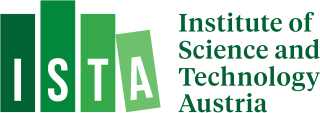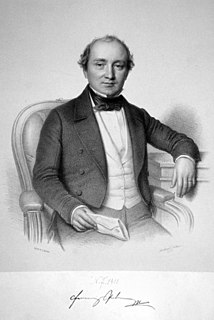Related Research Articles

Vienna is the national capital, largest city, and one of nine states of Austria. Vienna is Austria's most populous city, with about two million inhabitants, and its cultural, economic, and political center. It is the 6th-largest city proper by population in the European Union and the largest of all cities on Danube river.
Carl Emil Schorske, known professionally as Carl E. Schorske, was an American cultural historian and professor emeritus at Princeton University. In 1981 he won the Pulitzer Prize for General Non-Fiction for his book Fin-de-Siècle Vienna: Politics and Culture (1980), which remains significant to modern European intellectual history. He was a recipient of the first year of MacArthur Fellows Program awards in 1981 and made an honorary citizen of Vienna in 2012.

Michael Häupl is an Austrian politician. A member of the Social Democratic Party of Austria, he served as mayor and governor of Vienna from 7 November 1994 until 24 May 2018.

Alexander Van der Bellen is the current president of Austria. He previously served as a professor of economics at the University of Vienna, and after joining politics, as the spokesman of the Austrian Green Party.
The Medical University of Vienna is a public university located in Vienna, Austria. It is the direct successor to the faculty of medicine at the University of Vienna, founded in 1365 by Rudolf IV, Duke of Austria. As one of the oldest medical schools in the world, it is the oldest in the German-speaking countries, and was the second medical faculty in the Holy Roman Empire, after the Charles University of Prague.

The Judenplatz Holocaust Memorial also known as the Nameless Library stands in Judenplatz in the first district of Vienna. It is the central memorial for the Austrian victims of the Holocaust and was designed by British artist Rachel Whiteread.

The Institute of Science and Technology Austria (ISTA) is an international research institute in natural and mathematical sciences, located in Maria Gugging, Klosterneuburg, 20 km northwest of the Austrian capital of Vienna. It was established and inaugurated by the provincial government of Lower Austria and the federal government of Austria in 2009.
The Wittgenstein Award is an Austrian science award supporting the notion that "scientists should be guaranteed the greatest possible freedom and flexibility in the performance of their research." The prize money of up to 1.5 million euro make it the most highly endowed science award of Austria, money that is tied to research activities within the five years following the award. The Wittgenstein-Preis is named after the philosopher Ludwig Wittgenstein and is conferred once per year by the Austrian Science Fund on behalf of the Austrian Ministry for Science.

Friedrich Stadler is an Austrian historian and philosopher and professor for history and philosophy of science at the University of Vienna. He is the founder and long-time director of the Institute Vienna Circle, which was established as a Department of the Faculty of Philosophy and Education of the Vienna University in May 2011. Currently he is a permanent fellow of this Department and serves at the same time as the Director of the co-operating Vienna Circle Society, which is the continuation of the former Institute Vienna Circle as an extra-university institution.
The Karl Renner Prize, established on the occasion of the Austrian Federal President Karl Renner’s 80th birthday by the city of Vienna, is awarded to individuals or groups in recognition of merits for Vienna and Austria in cultural, social as well as economical concerns, acknowledged on a national or international level. Endowed with 43,600 euro, the prize is currently given to a maximum of six nominees every three years.
Franz Patay is an Austrian arts administrator, the former Rector of the Music and Arts University of the City of Vienna and CEO of the theatrical company Vereinigte Bühnen Wien.

The Memorial for the Victims of Nazi Military Justice is located at the Ballhausplatz in the centre of Vienna, opposite the President's office and the Austrian Chancellory. The monument was created by German conceptual artist Olaf Nicolai. The inscription atop the three-step sculpture features the poem by Scottish poet Ian Hamilton Finlay consisting of just two words: all alone.
Christoph Zielinski is an Austrian physician and cancer researcher. A medical oncologist, Zielinski is Director of the Clinical Division of Oncology and Chairman of the Department of Medicine I and the Comprehensive Cancer Centre at the Medical University of Vienna.

The Vienna BioCenter is a cluster of life science research institutes and biotechnology companies located in the 3rd municipal District of Vienna, Austria. It grew around the Research Institute of Molecular Pathology (IMP), which opened in 1988. The entities at the Vienna BioCenter employ more than 2,000 people, including 600 students.

Karin Kneissl is an Austrian diplomat, journalist and independent politician, having served as Minister of Foreign Affairs between 2017 and 2019. She is an expert on the Middle East and was a lecturer before assuming the government position she was offered by Chancellor Sebastian Kurz.
Ulrike Diebold is an Austrian physicist and materials scientist who is a Professor of Surface Science at TU Vienna. She is known for her groundbreaking research on the atomic scale geometry and electronic structure of metal-oxide surfaces.
Elise Riesel or also Eliza Genrichovna Rizel, was an Austrian linguist.

The 2020 Viennese state election was held on 11 October 2020 to elect the members of the Gemeinderat and Landtag of Vienna. The outgoing government was a coalition of the Social Democratic Party (SPÖ) and The Greens.

Franz Pokorny was an Austrian theatre manager. He owned two leading theatres in Vienna, the Theater in der Josefstadt and the Theater an der Wien, where he staged notable productions.
The Wiener Kaffeesiederball , also shortened: Kaffeesiederball is one of the extravagant traditional balls of the Viennese ball season.
References
- ↑ "Die schönsten Bälle im Überblick". Stadt Wien.
- ↑ "The Honorary Committee 2020 | Wiener Ball der Wissenschaften 2022". Wissenschaftsball.at.
- ↑ "Der Ball der vielen Präsidenten-Selfies". Die Presse. 29 January 2017.
- ↑ "Der neue und der alte Bürgermeister am Wissenschaftsball". Die Presse. January 28, 2018.
- ↑ "TV listing for tonight | Wiener Ball der Wissenschaften 2022". Wissenschaftsball.at.
- ↑ "Österreich und die FPÖ: Der Krieg der Bälle". Handelsblatt.com.
- ↑ "Having a ball in science". Science.org.
- ↑ "Waltzing for Science". Blogs.nature.com. Retrieved 5 July 2022.
- ↑ "När Wien dansade för vetenskapen". Dagens Nyheter . 4 February 2018.
- ↑ Bradley, Kimberly (4 February 2018). "Gowns, Wurst and Protesters: It's Ball Season in Vienna". The New York Times .